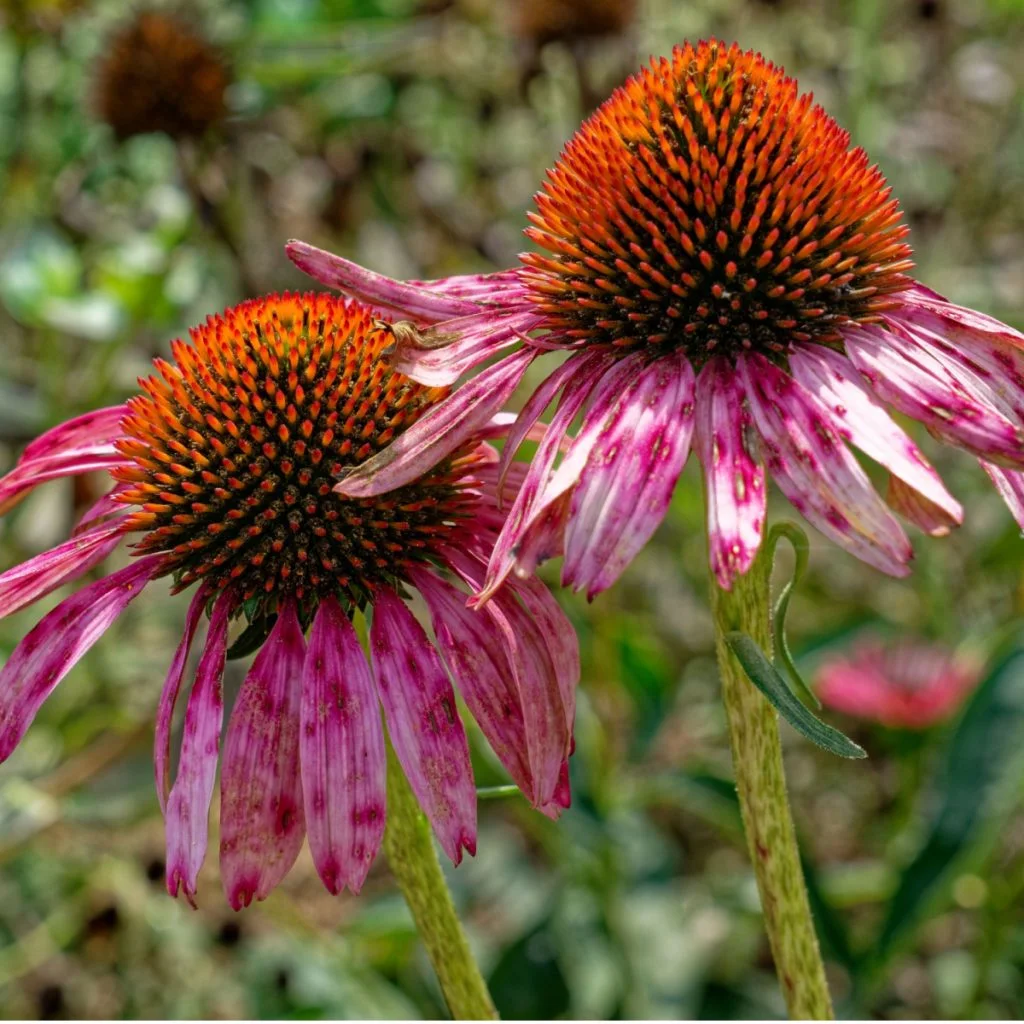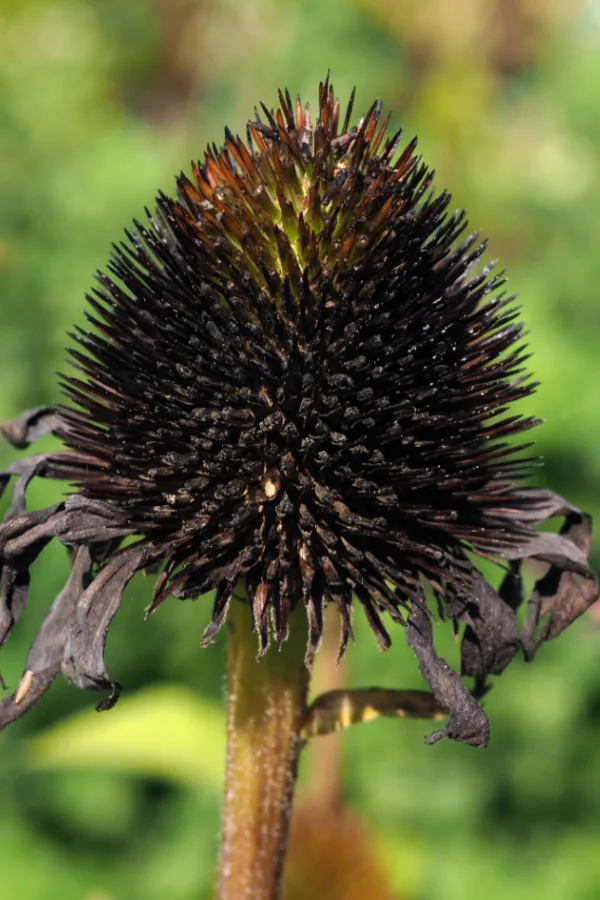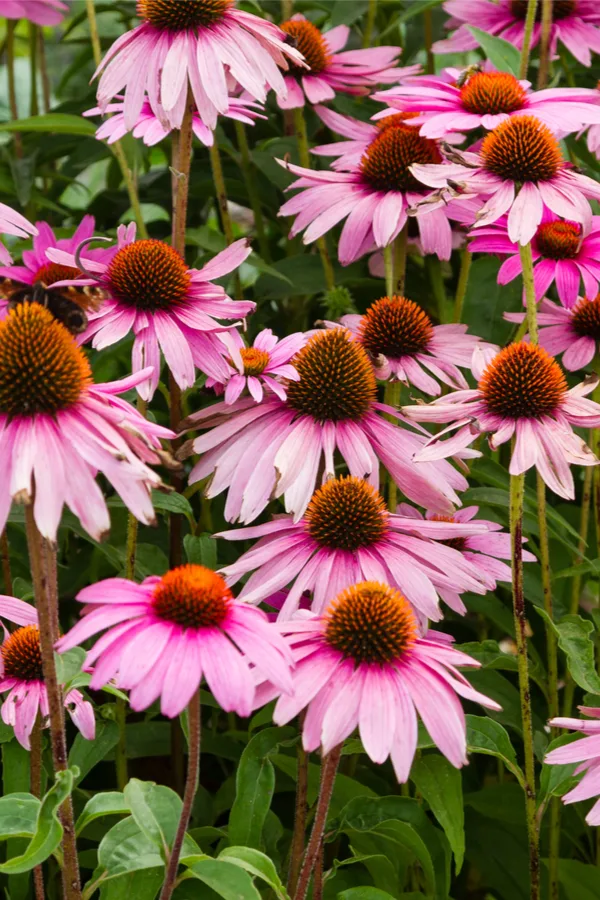Did you know that what you do with your coneflower plants once they finish blooming can play a big role in how healthy and strong they are next year? And how well they bloom again?
Coneflower is becoming more popular than ever. It’s truly one of the best late-summer blooming perennial plants around – and although bees and butterflies enjoy working its blooms, deer, rabbits and most insects stay clear of the plant. And to boot, it’s even drought resistant too!
Although the exact blooming period can vary depending on the specific variety and local conditions and climate, most coneflower plants come into bloom in mid to late summer. But once coneflowers finish their blooming cycle, it’s time for not only cutting them back and preparing them for winter, but also dividing and transplanting any overgrown plants as well.

Not only will this keep them healthy and vibrant for next year, it also gives you more plants for free. All while keeping your flowerbeds in perfect condition in the fall!
What To Do When Coneflower Plants Finish Blooming
Deadheading Coneflower
Deadheading, which is the practice of removing blooms as they fade or begin to die off, is a touchy subject for many gardeners when it comes to coneflowers.
Some like to leave the flower heads that are filled with seeds in place. Why? Because it’s a great source of food for birds in late fall and early winter. Other gardeners prefer to cut the seed heads off to keep their flowerbeds looking tidy. Removing them also prevents volunteer plants from growing next year from seed.
So what is the best option? Actually, a bit of early deadheading can be extremely beneficial to coneflower plants. Removing the first wave of blooms early on not only keeps your plants looking neat, it also encourages the plant to produce and flower stronger for the duration of its bloom cycle.
To deadhead early on, snip off any faded flowers just above the first set of healthy leaves. Removing the spent flower will help focus the plant’s energy to bolster the remaining blooms. It also stops the energy loss of the plant trying to form seeds on the dying bloom. And that is important to keep the plant’s strength and vitality!

Cutting Back The Final Flowers
Late in the season, as the summer days fade and the temperatures start to cool, coneflowers will naturally start to lose their vitality and their final set of blooms. It’s at this point when many gardeners will leave the remaining flower heads for the birds.
Although this can certainly be done, it’s far better to remove the stems and seed heads and simply place them elsewhere for birds to feed from. Why? Because this allows you to cut back the entire plant before winter, which has a lot more benefits for the following year’s bloom sets.
Cutting back your coneflower not only keeps them looking neat but also encourages the plant to focus any remaining energy on building strong roots for the next growing season.
To cut back, simply take your pruners or hedge trimmers and trim the stems down to around 3 to 5 inches above the ground. Once the plant has been cut back, this is also the perfect time to divide any of your coneflowers that have become overly large or unruly.
Dividing Coneflower Plants After They Finish Blooming
Over time, the roots of coneflowers can become a little too large for their original space. As they do, it can lead to less than ideal health for the plant – and far less blooming each year. Even more, overcrowding creates increased vulnerability to pests and disease.

But by dividing overgrown plants you can easily keep them fresh and healthy. Dividing is the perfect solution to give plants breathing room, a fresh start in the soil, and best of all, plenty of extra plants – all for free!
Fall is an excellent time to divide many perennials like coneflower, Black-eyed Susan, daylilies, hostas and more. However – there are a few perennials that are better to leave alone until spring. See our article: 3 Perennials You Should Never Divide In The Fall.
How To Divide
To divide and replant coneflower, start by gently digging up the entire plant, working a shovel around its edges until it loosens and lifts easily from the soil. Use your hands or the edge of the shovel to separate or slice the plant into smaller clumps, making sure each has several inches of healthy roots and shoots.
Replant the divisions right away so the roots can re-establish before winter. Add a bit of compost to the soil and space each new plant 18 to 24 inches apart. Affiliate Link: Back to the Roots 25.7qt (1 Cubic ft) Organic Premium Compost.
Always be sure to water thoroughly after planting. If the late summer and fall weather stays mild, you may see a few new green shoots appear before the plant goes dormant. This will not cause any harm, and the plant will just die back with the first frost.

Saving Seeds From Coneflowers
Another way to grow more coneflower plants is by seed. And it couldn’t be easier to save seeds from your existing flower heads in the fall.
Snip off the seed heads when deadheading and allow them to dry naturally. They can be left in the sun, but be sure to protect them from wildlife. If not, they will help themselves to the seed. Once the seed heads are dry and brown, gently collect the seeds. The easiest way to do this is by rubbing them from the seed head with your fingers.
Store seeds in a cool, dry place over winter. When spring arrives, you can sow seeds to grow new coneflowers. It’s a rewarding and simple way to extend the beauty of these flowers in your garden or share with friends. And with little effort!
Preparing Your Plants For Winter
Once your plants have been cut back, and you have divided and transplanted any of your larger coneflowers, it’s time to prepare them for winter.
One thing you don’t want to do is fertilize coneflower late in the season. Fertilizing encourages late season growth that is highly susceptible to winter damage. Instead, the best thing you can do is provide a little winter protection with a fresh coat of mulch.
Use a natural mulch like straw or wood chips and spread to a depth of about 2 to 3 inches. Be mindful not to pile the mulch up too heavy against the stems. This can lead to moisture buildup which can cause the roots to rot. All that is left is to wait until next spring and summer to enjoy your plants more than ever!
This Is My Garden
Follow Our Facebook Page For Great Gardening Tips And Advice! This Is My Garden Facebook Page
This Is My Garden is a garden website created by gardeners, for gardeners. Jim and Mary Competti have been writing gardening, DIY and recipe articles and books and speaking for over 15 years from their 46 acre Ohio farm. They publish three articles every week, 52 weeks a year. Sign up today to follow via email, or follow along!
